LFP (Lithium Iron Phosphate) and NMC (Nickel Manganese Cobalt) have been in the spotlight for their differences in performance, cost, and durability. If safety, long cycle life, and cost are your main concerns, LFP batteries are the better choice. But if you want a smaller battery with higher power output, NMC batteries have the edge.
Although both are lithium-ion batteries, their unique characteristics give them an edge in various applications, like robots, drones, marine, and medical devices. Which is right for you? This article delves into their differences, and their pros and cons, and their applications.
What are LFP VS NMC Batteries?
- LFP(Lithium Iron Phosphate) battery uses lithium iron phosphate as the cathode material, and graphite as the negative electrode. They have a stable structure, excellent thermal stability, and do not contain cobalt and nickel metal, boasting superior safety and low cost.
- NMC(Nickel Manganese Cobalt) battery utilizes nickel, cobalt, and manganese as cathode material and graphite as negative electrode material. Due cobalt metals are rare, the cost of NMC batteries is high.
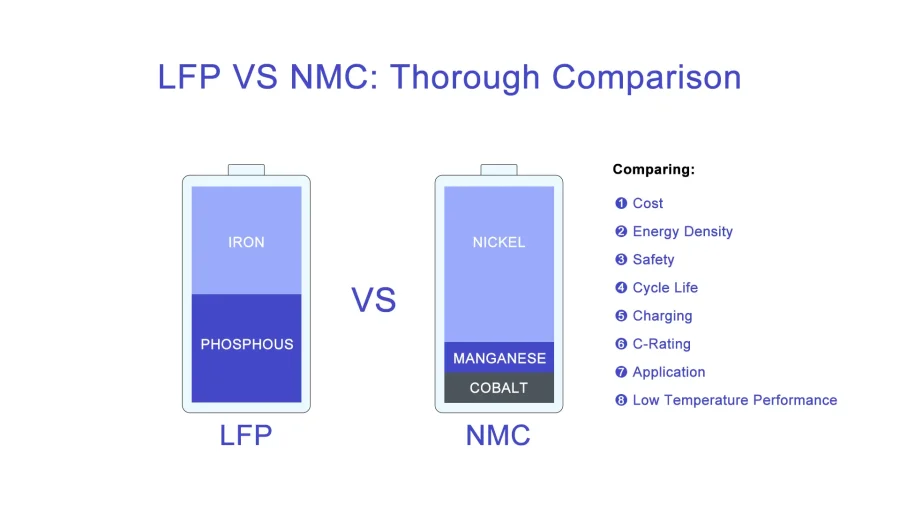
LFP VS NMC Battery: Comparison
Numerous differences between LFP and NMC batteries make them excel in various aspects. Let’s explore their distinctions and strengths.
Cost
NMC batteries are more expensive than LFP batteries. NMC batteries need rare metals as cathode material, such as nickel and cobalt, thus increasing raw material cost.
LFP battery is an affordable choice for abundant, cheap raw materials, like lithium carbonate. Its longer cycle life makes it more durable.
Weight
NMC batteries are lighter compared to LFP batteries, which means they deliver robust power with compact size, making them ideal for drones and robots.
Energy Density
NMC batteries have higher energy density than LFP batteries. NCM battery shines with 180-250Wh/kg energy density, offering more power at the same volume, providing ultra-long runtime. The LFP battery delivers 120-160Wh/kg energy density, resulting in a shorter driving range.
Safety
LFP battery is safer than NMC battery due to its stable chemical materials. LFP battery requires more heat for thermal runaway than NMC batteries. NMC batteries’ temperature rises faster than LFP batteries when thermal runaway occurs, causing a more intense fire.
Calendar Degradation
LFP batteries degrade more slowly compared to NMC batteries. LFP battery lost 3%-5% capacity while NMC battery lost 5%-8% capacity per year. Avoid storing batteries in high-temperature conditions, which accelerates decay.
Cold Weather Performance
NMC batteries possess better performance than LFP batteries in cold weather. The NCM battery has a -30℃ low-temperature limit, reducing less than 15% capacity in winter. On the contrary, LFP battery has poor performance in -20℃ low-temperature environments with dropped capacity.
Cycle Life
LFP battery’s cycle life is longer than NMC battery. LFP batteries last for 2000-5000 cycles while NMC batteries offer 1000-2000 cycles. LFP battery maintains over 80% charge after 3,500 cycles and needs replacement after 10 years. NMC battery degrades after over 2,000 cycles, about six years later.
Thermal Runaway
LFP batteries exhibit better thermal stability than NMC batteries for stable chemical materials and low-cost thermal management systems. NMC batteries require complex temperature control designs to prevent thermal runaway.
Charging Speed
NMC batteries charge faster than LFP batteries. NMC batteries withstand higher charging currents for large internal resistance, offering fast charging speeds. However, LFP batteries are prone to polarization when charged at high currents, which limits charging speeds. LFP takes longer to charge than NMC batteries.
C-rate performance
NMC batteries’ C-rate performance is superior to LFP batteries. Therefore, NMC batteries perform better than LFP in scenarios that require instantaneous high power output, such as vehicle acceleration and climbing.
Application
NMC Batteries are ideal for applications where compact size, superior energy density are critical, such as robots, drones, and premium EVs in cold weather.
LFP Batteries are suitable for applications where high safety, long cycle life, and low cost are vital, such as trolling motors, RVs, and medical devices.
| Performance | LFP battery | NMC battery |
| Energy density | Medium, 120-160Wh/kg | High, 180-250Wh/kg |
| Low temperature performance | poor | great |
| Cycle life | 2000-5000 cycles | 1000-2000 cycles |
| Safety | high | poor |
| Cost | low | high |
| Charging Speed | slow | fast |
| Application | boats, RVs, medical devices | robots, drones, premium EVs |
| Voltage( per cell) | 3.2V per cell | 3.6-3.7V per cell |
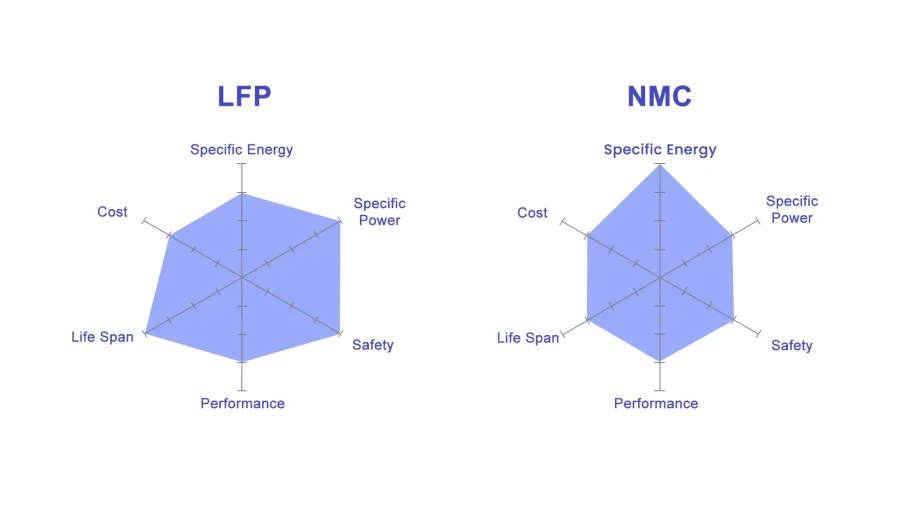
Pros and Cons of LFP VS NMC Battery
Pros of LFP battery
- Advanced Safety: LFP batteries exhibit remarkable thermal stability, are less susceptible to thermal runaway, and are less likely to catch fire or explode.
- Long Service Life: LFP batteries offer long cycle life with 2,000-5,000 cycles, providing a longer lifespan than NMC batteries, and are ideal for frequent use.
- Low Cost: LFP batteries are more affordable than NMC batteries due to their low-cost material, making them a preferred choice for low-budget EVs.
Pros of NMC battery
- Superior Energy Density: NMC batteries boast over 200 Wh/kg energy density, powering EVs with extended driving time.
- Superb Low-Temperature Performance: NMC batteries exhibit minimal degradation in low-temperature conditions compared to LFP batteries.
- Outstanding Battery Consistency: NMC batteries achieve high cell consistency to minimize individual cell variations during battery pack operation. It enhances battery pack lifespan and reduces degradation risk.
Cons of LFP battery
- Low energy density: LFP batteries have low tap density and bulk density, resulting in lower energy content per unit volume and short driving range, making them less than ideal for long-distance driving.
- Poor low-temperature performance: LFP batteries’ driving range and charging efficiency drop intensely in sub-zero temperatures.
- Lack of battery consistency: Synthesis reaction of LFP battery is complex and difficult to ensure consistency, posing battery swelling or device shutdown.
Cons of NMC battery
- Short Cycle Life: The capacity of NMC batteries decays rapidly around 1,000-2,000 cycles, reducing the battery’s endurance after long-term use.
- Strict Environmental Requirements: NMC batteries perform well at low temperatures, whereas they are sensitive to high-temperature conditions.
LFP VS NMC Battery for EVs
In the EV field, choosing NMC or LFP batteries has been a heated topic. LFP batteries stand out for safer driving, extended cycle life, and low cost. NMC batteries outshine in higher energy density, promising operating range, and stronger power output in cold weather. Thus, choosing NMC or LFP battery hinges on your purchasing intention.
Consider an LFP battery if durability is the priority. Because its capacity decay is 2-4 times slower than NMC, allowing for a 10-year service life. However, the NMC battery’s endurance is reduced after 6 years.
LFP battery is the preferred choice when safety is paramount. Its chemical structure is resistant to thermal runaway, making overcharging, fast charging. In contrast, NMC relies on a complex battery management system and presents potential safety risks.
NMC battery outshines in fast charging efficiency. Thanks to superior conductivity, NMC batteries support higher-power DC fast charging and recharge faster than LFP batteries.
Overall, choose LFP if you plan to keep your car for more than ten years, prioritize safety, and 90% of your use is for city commuting. Choose NMC if you drive long distances and rely on fast charging, seek long range, and are likely to upgrade within six years.
LFP VS NMC Battery: Which is Better?
LFP batteries boast high safety, long lifespan, and low cost, and are used in commercial vehicles and marine trolling motors. NMC batteries excel in superior energy density, fast charging, and dominate in drones, robots, and passenger vehicles in cold regions.
Consider your application needs and choose an appropriate battery. Cooperate with a reliable battery manufacturer to get your custom battery pack solution. CM Batteries is a professional LFP and NMC battery manufacturer providing custom battery solutions with over 15 years of experience. Need any help? Get in touch with our professional engineers to get your solution.
FAQ about NMC VS LFP Battery
LFP VS NMC VS NCA: What’s the difference?
Three lithium-ion batteries are using different cathode materials with different energy densities. LFP batteries offer an energy density of 120-160Wh/kg, which is not as high as NMC (180-250Wh/kg) or NCA (200- 260Wh/kg).
Do LFP batteries degrade faster than NMC batteries?
LFP batteries degrade more slowly than NMC batteries due to their stable chemistry, contributing to their longer lifespan and improving long-term performance.
How does temperature affect ternary lithium batteries VS lithium iron phosphate batteries?
Ternary lithium batteries outperform in low-temperature conditions for good electrical conductivity, while Lithium iron phosphate batteries are resistant to high temperatures for better thermal stability.
NMC VS LiFePO4 battery: Which is best for energy storage system?
LiFePO4 batteries are high safety, long lifespan, and cost-effective for home energy storage and renewable energy grid integration. NMC batteries have high-rate performance and fast response capabilities for UPS(uninterruptible power supply) and grid frequency regulation.
Will LFP make NMC batteries mostly obsolete?
LFP batteries cannot replace NMC batteries in the short term. Ternary lithium batteries perform better than lithium iron phosphate in the premium long-range market and low-temperature environment.

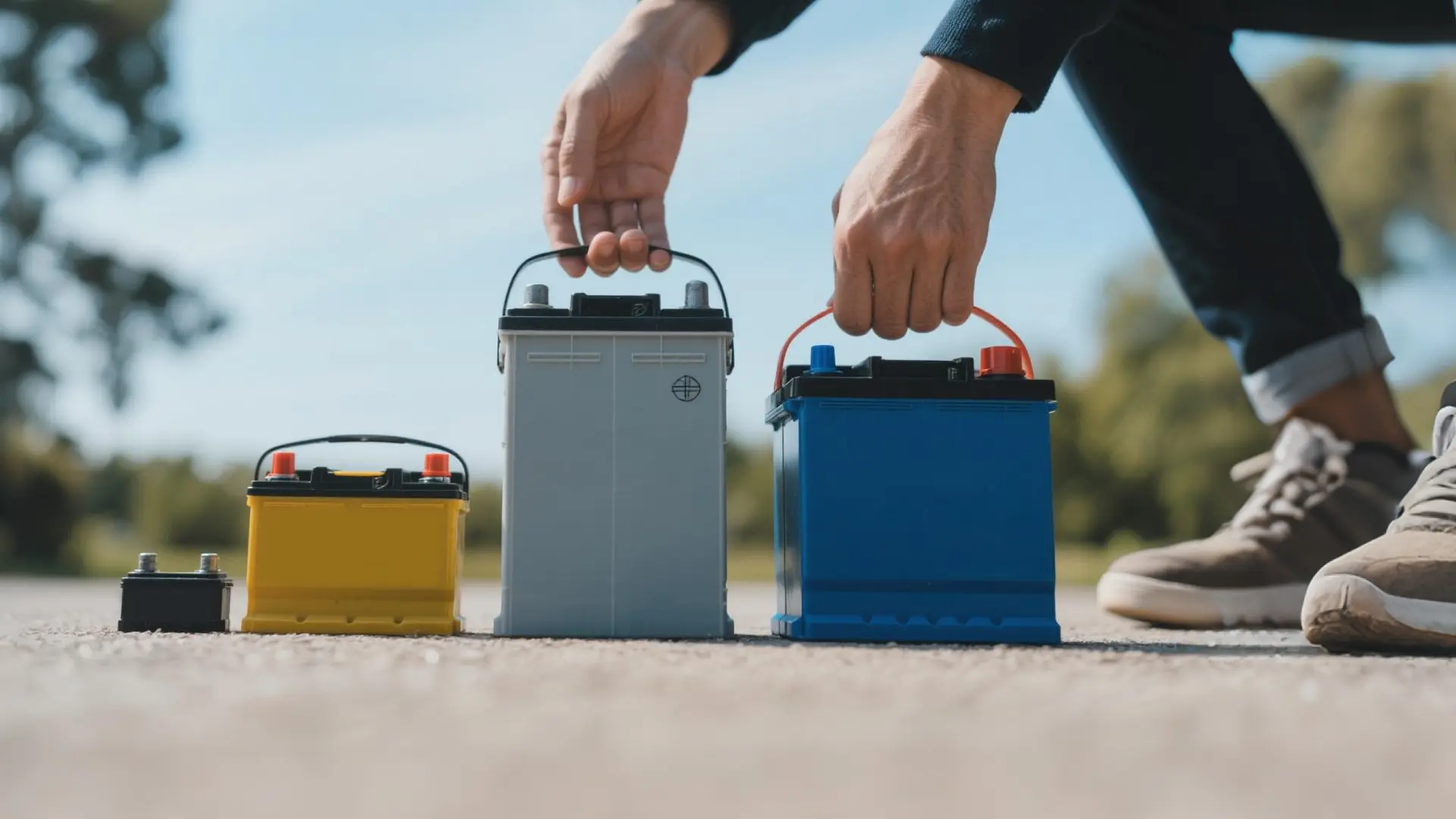

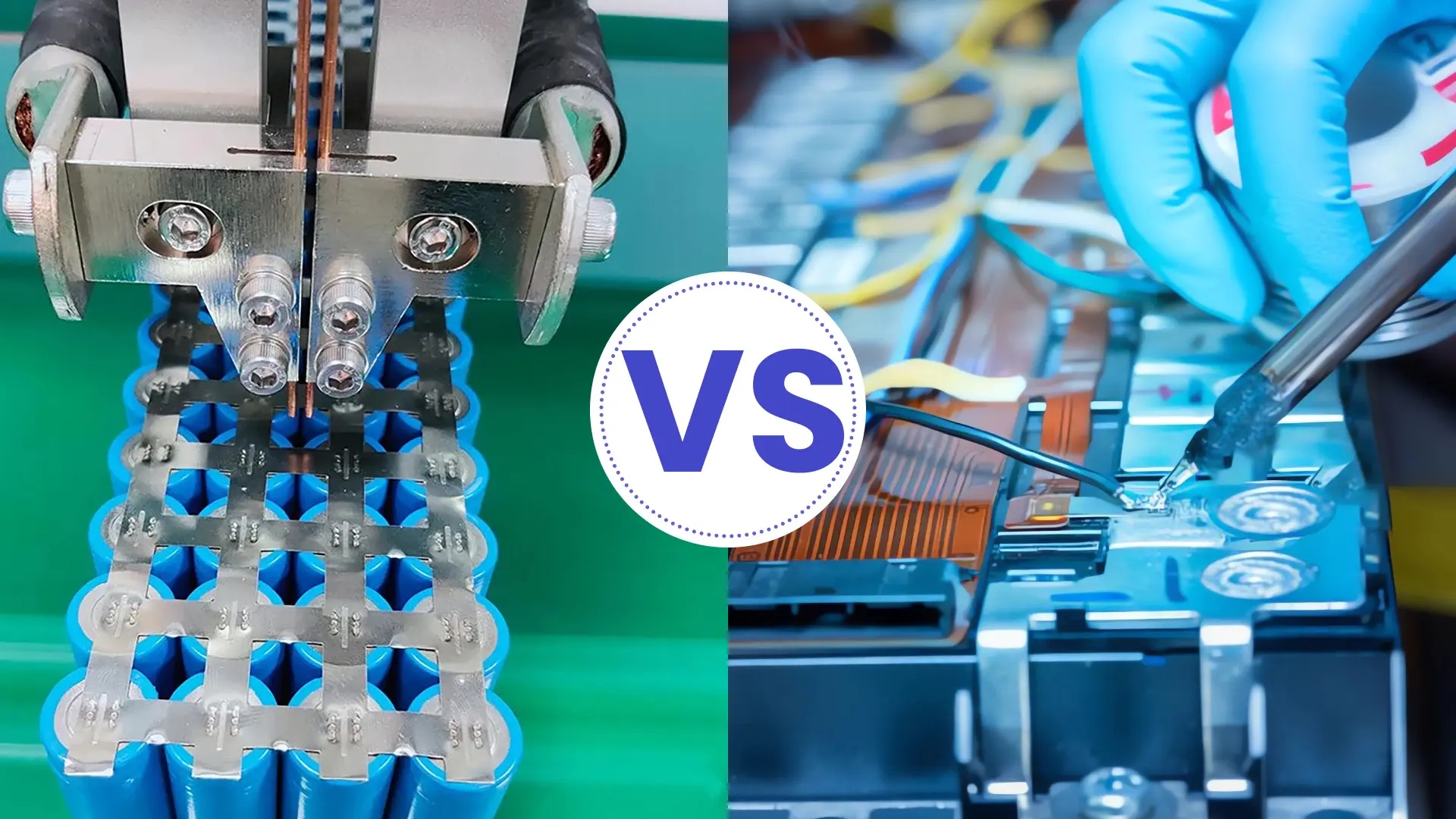
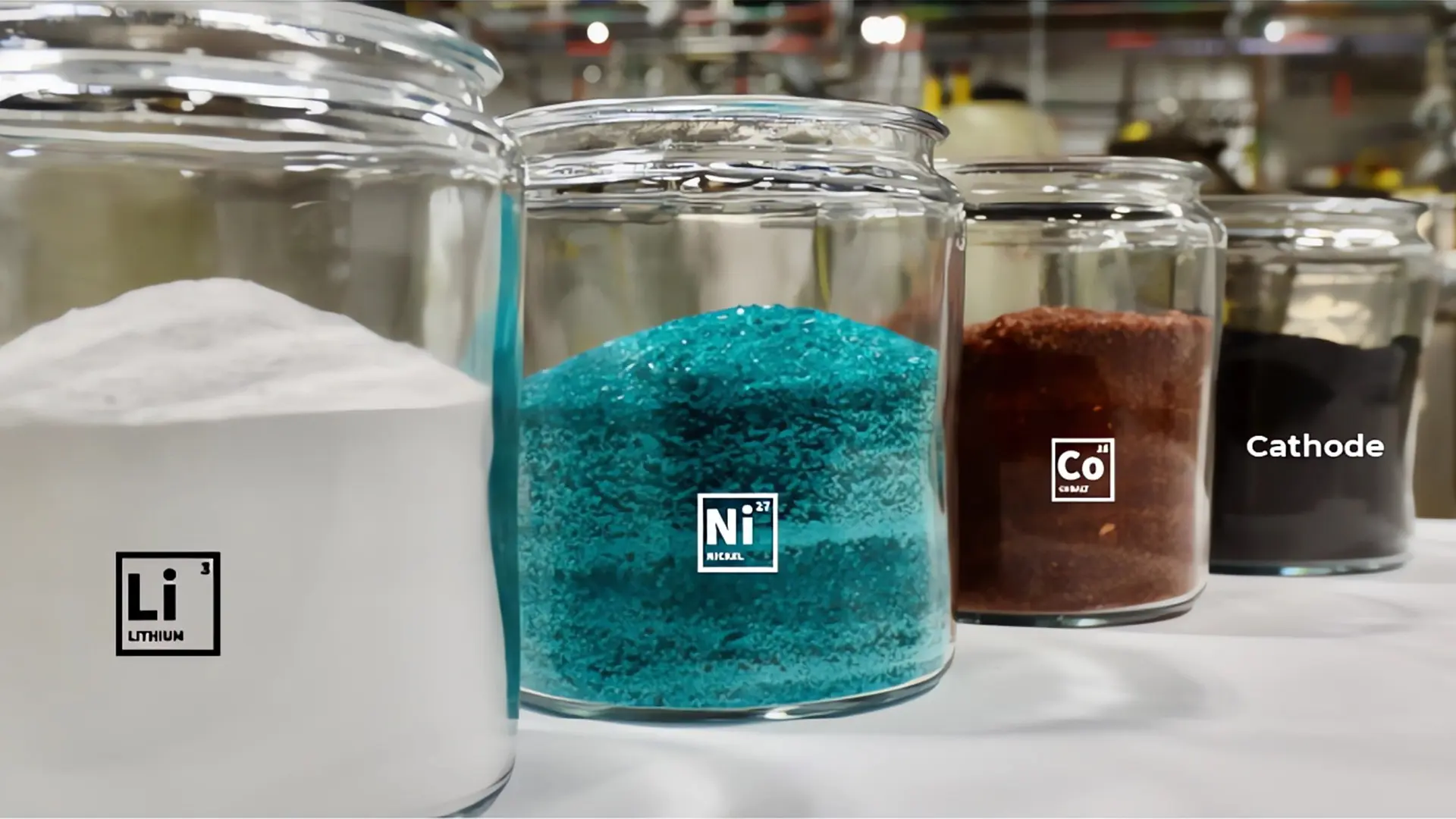
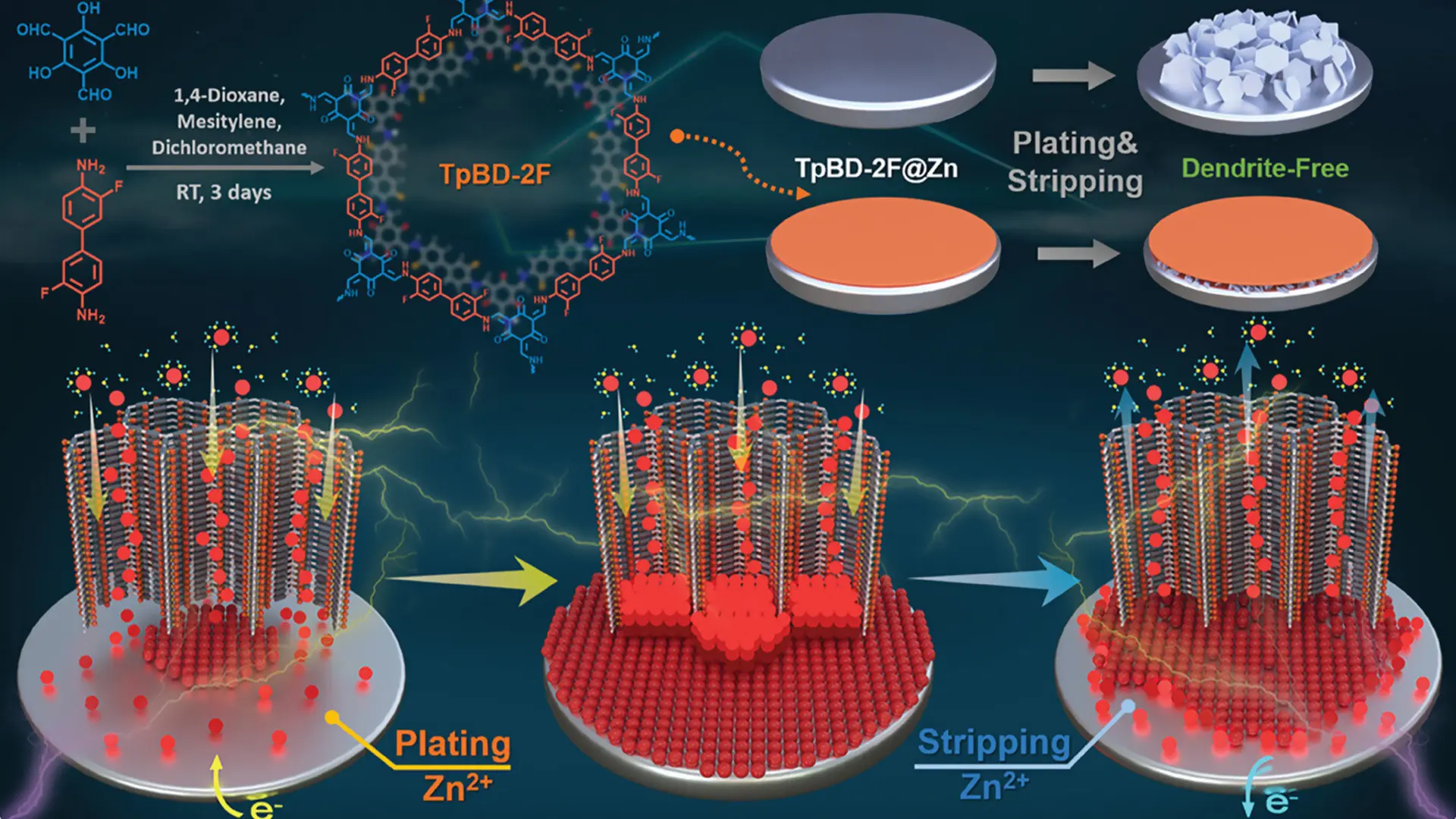
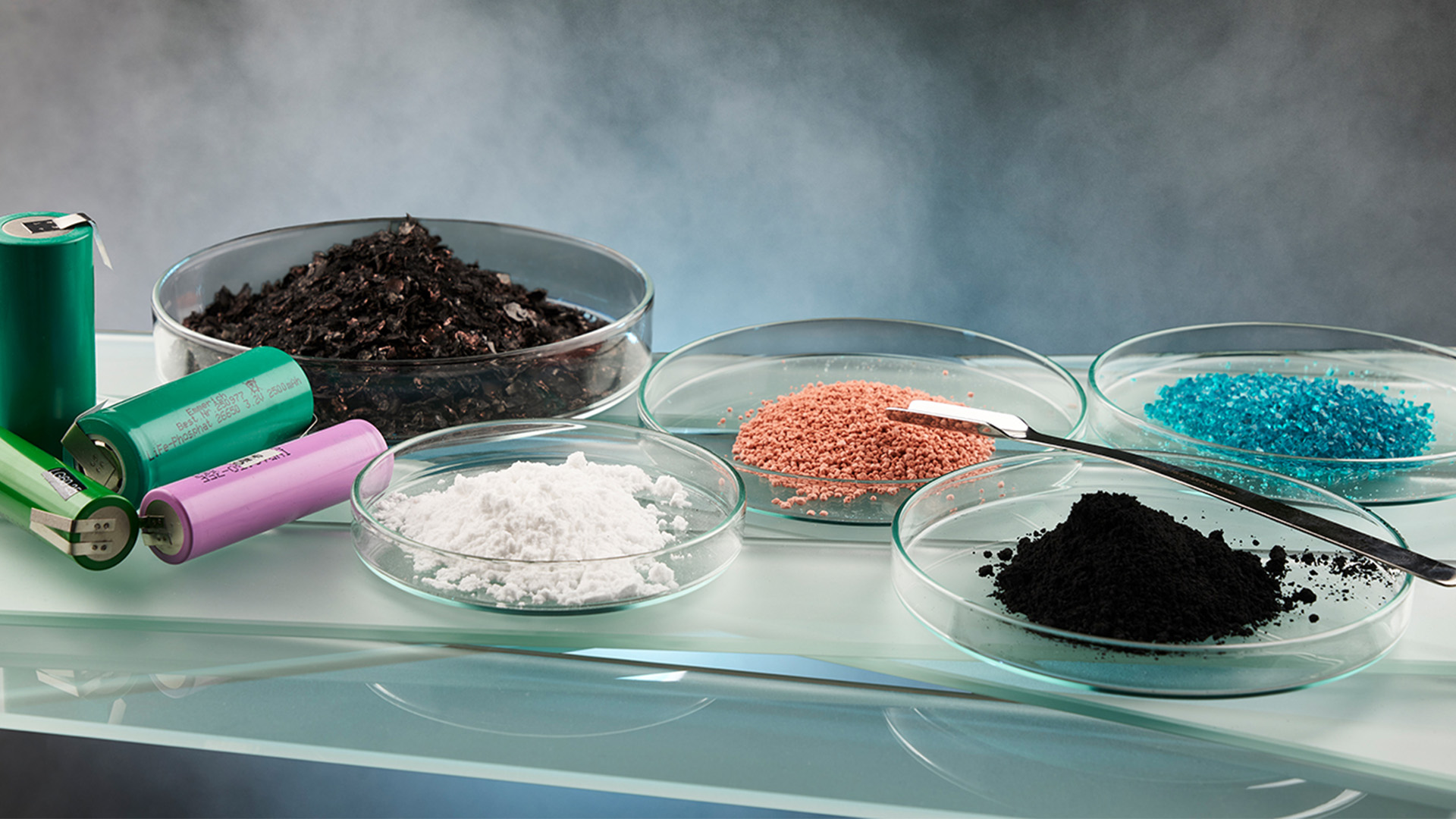

One thought